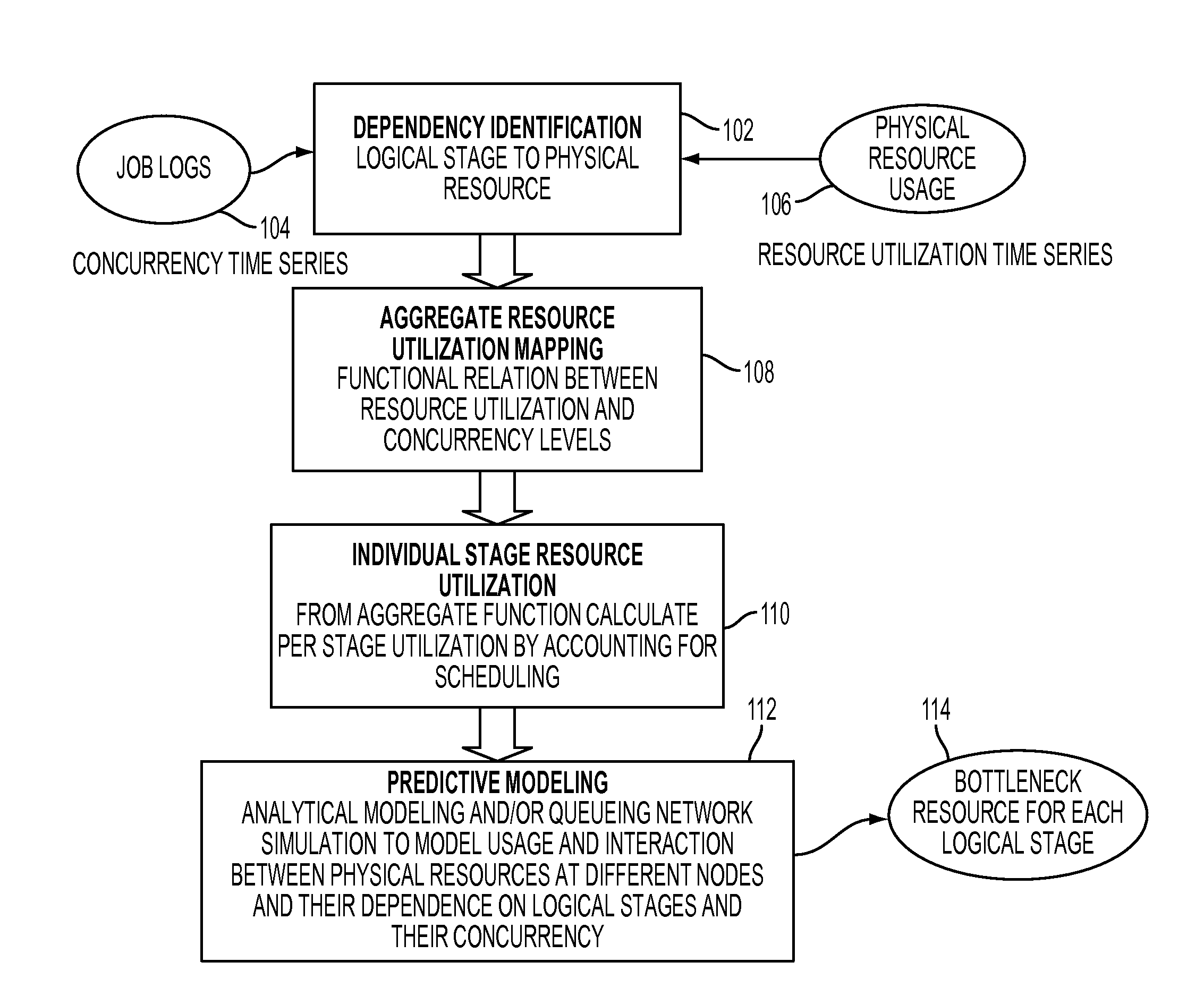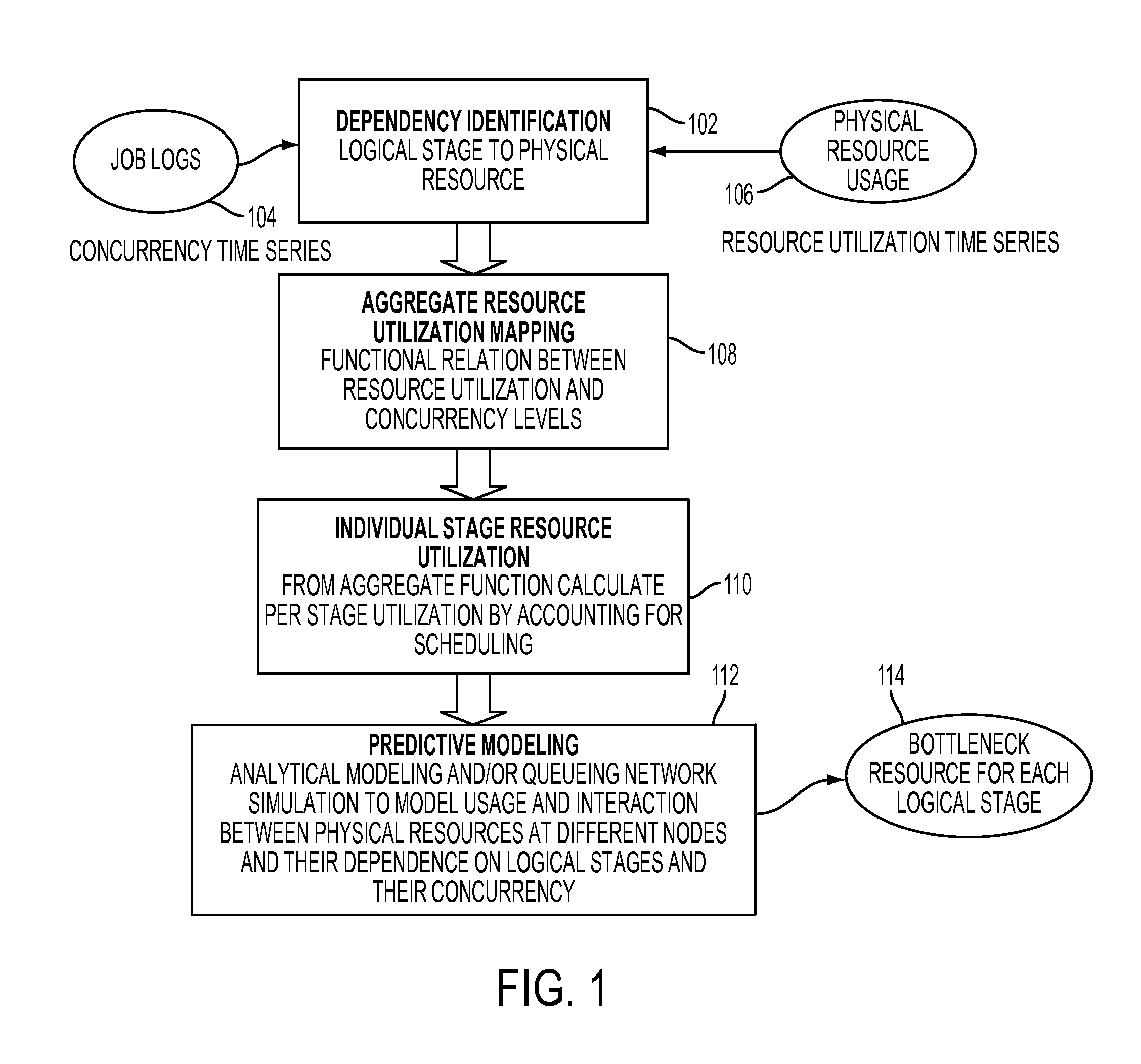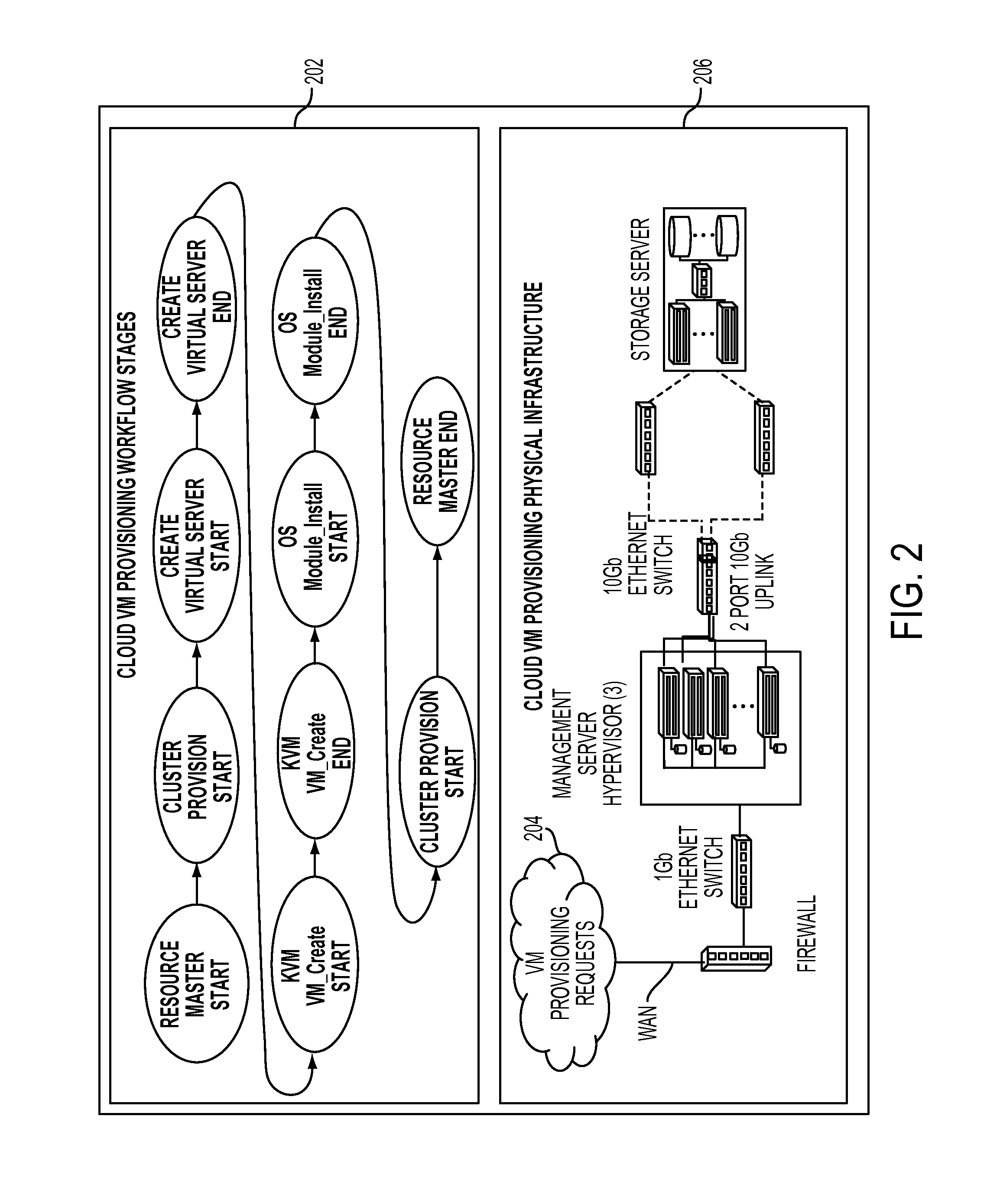Resource bottleneck identification for multi-stage workflows processing
- Summary
- Abstract
- Description
- Claims
- Application Information
AI Technical Summary
Benefits of technology
Problems solved by technology
Method used
Image
Examples
Embodiment Construction
[0011]The present disclosure in one aspect may provide an improved method of identifying resource bottlenecks for multi-stage workflows. In one aspect, the present disclosure may provide for mapping workflows to resources at the logical stage level instead of the job level providing for finer granularity and bottleneck determination. For mapping between logical stages and physical resources, the present disclosure may provide for identifying dependencies between workflow and physical resources on a logical stage level, then mapping between resource utilization and concurrency levels of different logical stages, calculating per stage utilization accounting for scheduling, and then modeling the usage and interaction between the logical stages and the physical resources.
[0012]The present disclosure, in one aspect, investigates a system that is designed to process many job requests at the same time in a scalable fashion in order to fully utilize all its resources and achieve a high leve...
PUM
 Login to View More
Login to View More Abstract
Description
Claims
Application Information
 Login to View More
Login to View More - R&D
- Intellectual Property
- Life Sciences
- Materials
- Tech Scout
- Unparalleled Data Quality
- Higher Quality Content
- 60% Fewer Hallucinations
Browse by: Latest US Patents, China's latest patents, Technical Efficacy Thesaurus, Application Domain, Technology Topic, Popular Technical Reports.
© 2025 PatSnap. All rights reserved.Legal|Privacy policy|Modern Slavery Act Transparency Statement|Sitemap|About US| Contact US: help@patsnap.com



